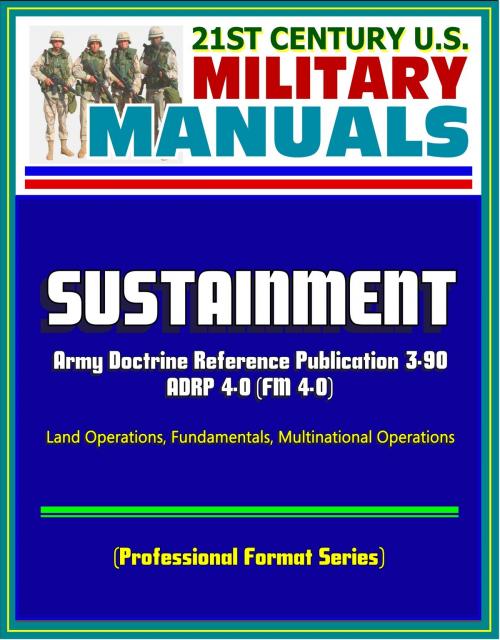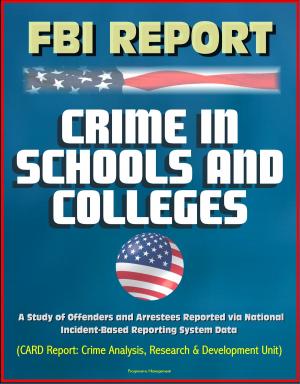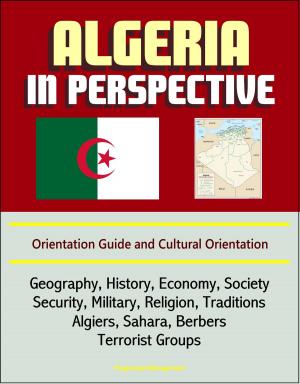21st Century U.S. Military Manuals: Sustainment - 2012 Army Doctrine Reference Publication ADRP 4-0 (FM 4-0), Land Operations, Fundamentals, Multinational Operations (Professional Format Series)
Nonfiction, History, Military, Strategy| Author: | Progressive Management | ISBN: | 9781301816682 |
| Publisher: | Progressive Management | Publication: | November 30, 2012 |
| Imprint: | Smashwords Edition | Language: | English |
| Author: | Progressive Management |
| ISBN: | 9781301816682 |
| Publisher: | Progressive Management |
| Publication: | November 30, 2012 |
| Imprint: | Smashwords Edition |
| Language: | English |
Professionally converted for accurate flowing-text e-book format reproduction, Army Doctrine Reference Publication (ADRP) 4-0 augments the sustainment doctrine established in Army Doctrine Publication (ADP) 4-0, Sustainment. This manual expands the discussion on the overarching guidance on sustainment in ADRP 3-0, Unified Land Operations. It constitutes the Army's view of how it supports prompt and sustained operations on land and sets the foundation for developing the other principles, tactics, techniques, and procedures detailed in subordinate doctrine publications.
Army Doctrine Reference Publication (ADRP) 4-0, Sustainment, is the Army's doctrine for sustainment in support of operations. The doctrine discussed in this manual is nested with ADRP 3-0, Unified Land Operations, and describes the sustainment warfighting function. The endurance of Army forces is primarily a function of their sustainment. Sustainment determines the depth and duration of Army operations. It is essential to retaining and exploiting the initiative. Sustainment provides the support necessary to maintain operations until mission accomplishment.
Sustainment is crucial to the success of operations. It must be planned and synchronized with the operation at every level. It is dependent upon joint and strategic links and must be meticulously coordinated to ensure resources are delivered to the lowest level of need. Therefore, sustainment is inherently joint. The combatant commander (CCDR) is able to maximize the effect of combat power through joint interdependence. The Army's capabilities enable joint interdependence into a theater of operations. The Army's robust sustainment capability assists in providing crucial theater and port opening functions enabling joint forces to conduct strategic and operational reach. Once the theater is set, Army sustainment capabilities continue to provide the bulk of Army support to other services (ASOS), common user logistics (CUL), and other common sustainment resources. This enables joint forces with freedom of action and endurance. Through mission command, sustainment commanders instill confidence and disciplined initiative in subordinate commanders which enable them to be bold in taking decisive action.
Chapter 1 discusses the three elements of the sustainment: logistics, personnel services, and health service support. It establishes the principles for each of the sustainment elements.
Chapter 2 discusses the doctrinal bridge between sustainment at the strategic (joint and multinational) level and the operational level. It explains the role of the strategic base in leveraging National capabilities to establish and support theater operations. Sustainment is inherently joint and intrinsically linked across Services and multinational capabilities. Army forces receive support from other Services and provide support to joint and multinational partners.
Chapter 3 describes how sustainment operations support unified land operations through decisive action. This chapter is divided into three sections describing how sustainment operations provide the Army with operational reach, freedom of action and endurance.
Chapter 4 describes in greater detail, the elements of sustainment and the capabilities they provide the commander. It establishes guidance for each element and serves as a hook to subordinate sustainment manuals that will provide the techniques and tactics of sustainment.
As a bonus, this reproduction includes the complete 2012 Army Leadership manual (FM 6-22), which describes the Army's view of leadership, outlines the levels of leadership (direct, organizational, and strategic), and describes the attributes and core leader competencies across all levels.
Professionally converted for accurate flowing-text e-book format reproduction, Army Doctrine Reference Publication (ADRP) 4-0 augments the sustainment doctrine established in Army Doctrine Publication (ADP) 4-0, Sustainment. This manual expands the discussion on the overarching guidance on sustainment in ADRP 3-0, Unified Land Operations. It constitutes the Army's view of how it supports prompt and sustained operations on land and sets the foundation for developing the other principles, tactics, techniques, and procedures detailed in subordinate doctrine publications.
Army Doctrine Reference Publication (ADRP) 4-0, Sustainment, is the Army's doctrine for sustainment in support of operations. The doctrine discussed in this manual is nested with ADRP 3-0, Unified Land Operations, and describes the sustainment warfighting function. The endurance of Army forces is primarily a function of their sustainment. Sustainment determines the depth and duration of Army operations. It is essential to retaining and exploiting the initiative. Sustainment provides the support necessary to maintain operations until mission accomplishment.
Sustainment is crucial to the success of operations. It must be planned and synchronized with the operation at every level. It is dependent upon joint and strategic links and must be meticulously coordinated to ensure resources are delivered to the lowest level of need. Therefore, sustainment is inherently joint. The combatant commander (CCDR) is able to maximize the effect of combat power through joint interdependence. The Army's capabilities enable joint interdependence into a theater of operations. The Army's robust sustainment capability assists in providing crucial theater and port opening functions enabling joint forces to conduct strategic and operational reach. Once the theater is set, Army sustainment capabilities continue to provide the bulk of Army support to other services (ASOS), common user logistics (CUL), and other common sustainment resources. This enables joint forces with freedom of action and endurance. Through mission command, sustainment commanders instill confidence and disciplined initiative in subordinate commanders which enable them to be bold in taking decisive action.
Chapter 1 discusses the three elements of the sustainment: logistics, personnel services, and health service support. It establishes the principles for each of the sustainment elements.
Chapter 2 discusses the doctrinal bridge between sustainment at the strategic (joint and multinational) level and the operational level. It explains the role of the strategic base in leveraging National capabilities to establish and support theater operations. Sustainment is inherently joint and intrinsically linked across Services and multinational capabilities. Army forces receive support from other Services and provide support to joint and multinational partners.
Chapter 3 describes how sustainment operations support unified land operations through decisive action. This chapter is divided into three sections describing how sustainment operations provide the Army with operational reach, freedom of action and endurance.
Chapter 4 describes in greater detail, the elements of sustainment and the capabilities they provide the commander. It establishes guidance for each element and serves as a hook to subordinate sustainment manuals that will provide the techniques and tactics of sustainment.
As a bonus, this reproduction includes the complete 2012 Army Leadership manual (FM 6-22), which describes the Army's view of leadership, outlines the levels of leadership (direct, organizational, and strategic), and describes the attributes and core leader competencies across all levels.















